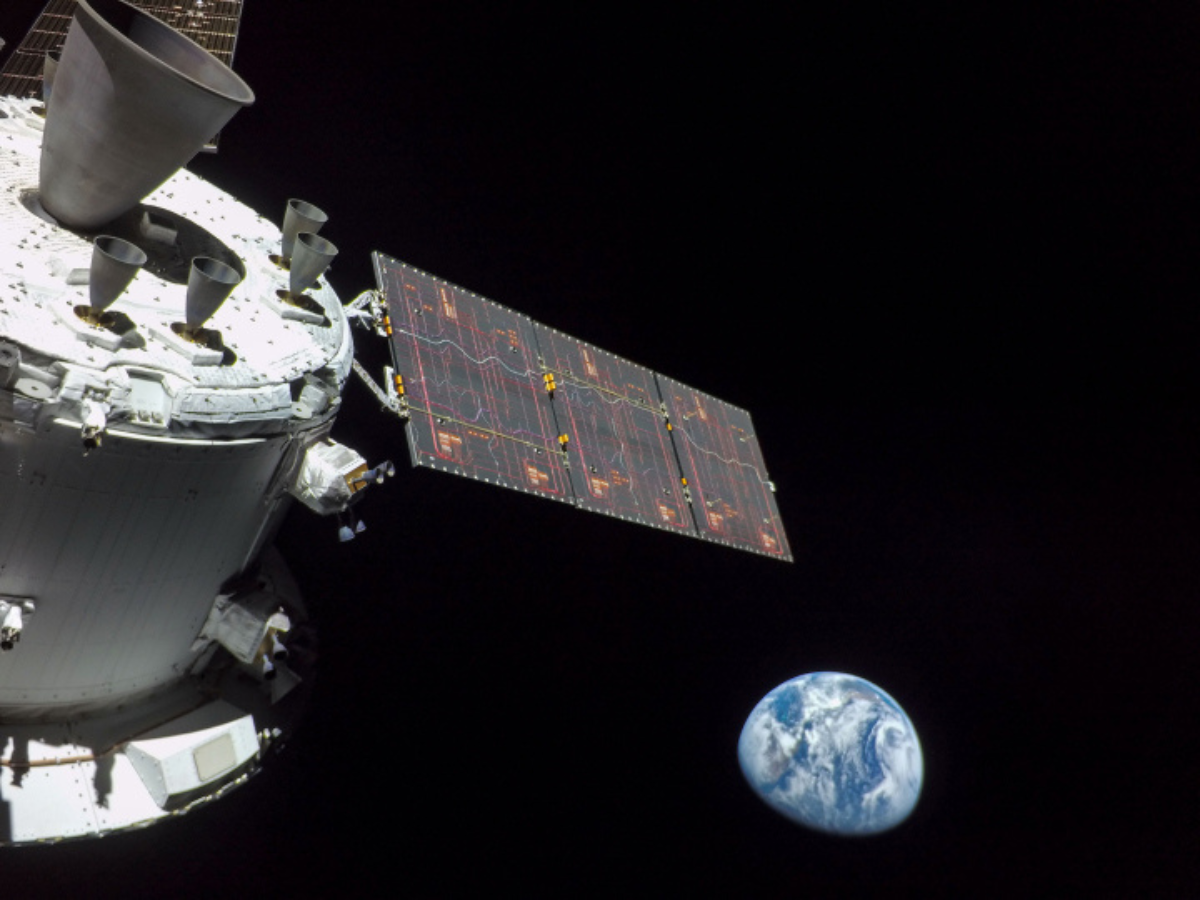Last updated on – Jan 18, 2024, 20:07 IST
Orion’s view reminding of ‘blue marble’
In November 2022, during the uncrewed Artemis I mission, photos of Earth were captured, reminiscent of the iconic “blue marble” image taken by the Apollo 17 crew 50 years earlier. Captured on November 16, 2022 during the initial day of the 26-day mission, the featured photograph was taken using an externally mounted camera on the Orion spacecraft. (Nasa)
Moon’s shadow on Earth
This photo captured by Nasa during the annular eclipse on October 14, 2023 shows the darkened portion of the Planet across the United states as the Sun rays were blocked by the Moon. (Nasa)
Advertisement
A unique view
On December 24, 1968, Apollo 8 astronauts broadcasted a live Christmas Eve message from orbit around the Moon, featuring the iconic “Earthrise” image, a view of Earth rising on the lunar horizon. Forty-seven years later, in 2015, the Lunar Reconnaissance Orbiter captured the above composite view reminiscent of the 1968 image, showcasing Earth from lunar orbit. (Nasa)
View from million miles away
Launched into space on February 11, 2015, by a SpaceX Falcon 9 rocket, DSCOVR completed a journey of approximately 1.6 million kilometers (1 million miles) to reach the L1 Lagrange Point. Subsequently, the satellite, equipped with its Earth Polychromatic Imaging Camera (EPIC), captured its initial glimpse of the fully illuminated side of Earth in July 2015. (Nasa)
Nasa’s curiosity view of Earth from Mars
Captured by NASA’s Curiosity rover in February 2014, this image reveals Earth shining more brightly than any star in the Martian night sky. Positioned slightly left of the image’s center, Earth appears as a bright point of light, with its moon visible just below it. Curiosity, an advanced rover at the time was touched down on the red planet on August 6, 2013. The rover is dedicated to studying the geology of its surroundings and has uncovered evidence suggesting a past environment conducive to supporting microbial life. (Nasa)
Voyager 1’s capture
On September 18, 1977, Voyager 1 captured an image of Earth and the Moon in a crescent shape. The spacecraft was only 11.66 million kilometers (7.25 million miles) away from Earth at that moment, positioned directly above Mount Everest on the night side of the planet, specifically at 25 degrees north latitude. (Nasa)
View from the Apollo 11
Crew of the Apollo 11 launched from Cape Canaveral at 9.32 am. on July 16, 1969, captured this view of the Earth. The top view shows the full disk of Earth, with bits of California, the Pacific Northwest coast, and Alaska peeking through the cloud cover in a scene otherwise dominated by the Pacific Ocean. (Nasa)
Advertisement
Image from the Apollo 8 space shuttle
In the black-and-white image, captured on December 24, 1968, the Earth ascended above a flat expanse while the Apollo 8 crew completed their orbit around the Moon. The spacecraft positioned itself near 110 degrees east lunar longitude, revealing a vast horizon extending approximately 570 kilometers (250 miles) into the distance. (Photo: Nasa)
Expand

Shambhu Kumar is a science communicator, making complex scientific topics accessible to all. His articles explore breakthroughs in various scientific disciplines, from space exploration to cutting-edge research.


